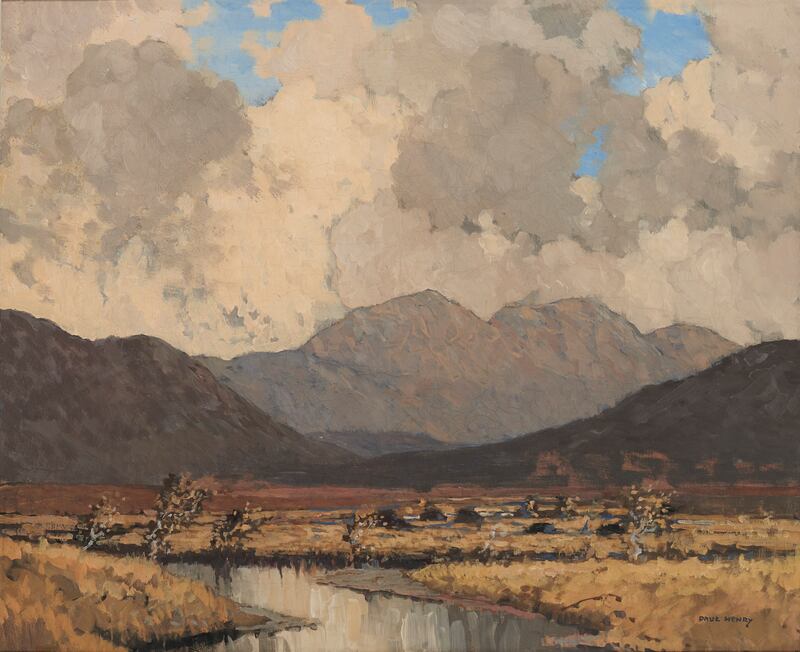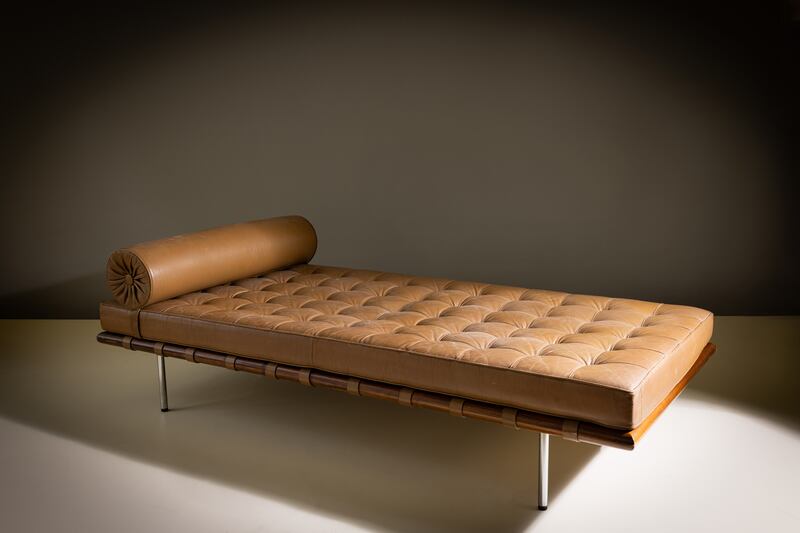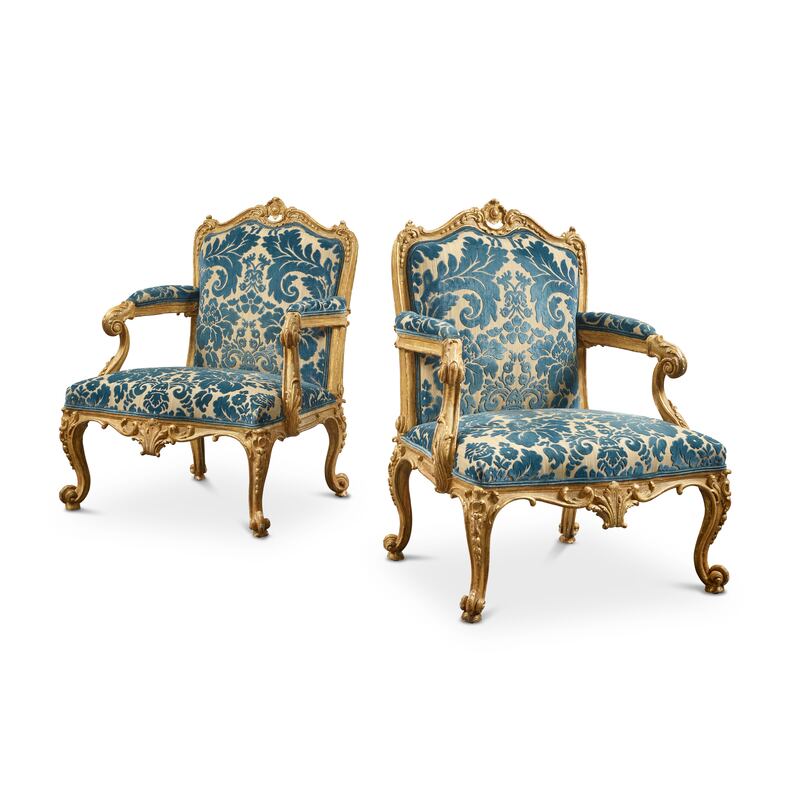Artichoke lights and ice buckets, artworks by Sean Scully, and a day bed from one of the pioneers of modern architecture are all set for auction over the coming weeks.
DeVeres Art and Design sales always have a good selection of unusual pieces on offer, and the catalogue for the sale of classic 20th-century design of furniture and art, which will take place in a timed online sale on Tuesday, October 24th, is now available to view online.

Art takes the lead in terms of high estimates with works by Paul Henry and Daniel O’Neill. Henry’s Maam Valley, near Leenane in Co Galway, perfectly captures the moody Connemara landscapes (lot 16, €70,000-€100,000). Executed in summer 1942, it demonstrates the artist’s mature work before the blindness that befell him as the result of an illness – thought to be either a stroke or nervous breakdown in 1946 – according to the Dictionary of Irish Biography.
Daniel O’Neill’s Landscape (lot 17, €10,000-€15,000) emulates “the richness of the Fauves, along with their frenetic brushwork”, with the striking use of yellow and amber over white impasto, according to catalogue notes. For fans of contemporary Irish-American artist Sean Scully, lot 7 in the sale is an etching Enter 6 (No 4), from 1998, at €4,000-€6,000.
Paul Mescal on Saturday Night Live review: Gladiator II star skewers America’s bizarre views about Ireland
Joan Baez: Do I ever hear from Bob Dylan? ‘Not a word’
The 50 best films of 2024 – the top 10 movies of the year
Late Late Toy Show review: Patrick Kielty is fuelled by enough raw adrenaline to power Santa’s reindeer

In terms of furniture, lot 10 is a set of six walnut chairs by Norman Cherner, manufactured by the Cherner Chair Company (€2,000-€3,000). The sculptural swoop of its wing like arms and sloping seat, takes influence from the Bauhaus movement and epitomises mid-century design.
Mid-century greats such as Mies van der Rohe – the man who coined the term “less is more” – is represented by a Barcelona Day Bed (lot 6, €4,000-€6,000) while lot 177, with an estimate of €400-€600, is a set of four tubular chrome armchairs in the “style of” van der Rohe, one of the pioneers of modern architecture.

Considered a classical masterpiece due to its elegant artichoke shaped structure, is Poul Henningsen’s Artichoke ceiling light for Louis Poulsen. The Danish design, which bears the maker’s stamp, in white lacquered steel is composed of 72 leaves around 12 steel arches, specifically arranged to emit a soft, diffused, warm and glare-free light (lot 9, €3,000-€5,000). In keeping with the vegetable theme is Mauro Manetti’s silver-plated artichoke ice bucket (lot 63, €400-€600). The designer won numerous awards throughout his career, including the Compasso d’Oro in 1987 and 1994, and his work forms part of the collections at MoMA in New York, the Centre Pompidou in Paris and the Victoria and Albert in London.

Irish furniture in New York
Three pieces of old Irish furniture will be offered at Sotheby’s New York this week in its Classic Design: Furniture, Silver and Ceramics sale on October 17th. An Irish George III hare wood and tulipwood marquetry demi-lune commode is listed at $50,000-$80,000 (€47,300-€75,432). The piece is attributed to William Moore of Dublin circa 1790, who was described by the late Knight of Glin, Desmond FitzGerald, as “by far the most important cabinet-maker who reflected the new taste for neoclassicism and the Adam’s style”. Also attributed to Moore, is a George III demi lune side table circa 1780, listed at $30,000-$50,000 (€28,287-€47,300), while a pair of George II carved giltwood armchairs, thought to have been commissioned by Charles Moore, first earl of Charleville, and bearing the label of R Strahan & Co, listed at $100,000-$150,000 (€94,261-€141,402), “epitomises the consummate English rococo of the mid-18th century”.



The armchairs are thought to have come from a suite from Charleville Castle in Tullamore that were said to have been removed from the keep by Charles Howard-Bury to Belvedere House in Mullingar, the lakeside Palladian villa designed by Robert Cassels in 1740.
Soldier, explorer and botanist Howard-Bury led the Mount Everest reconnaissance expedition in 1921, and was awarded the 1922 founders medal of the Royal Geographical Society for his leadership on the mission. During this expedition, Howard-Bury found large footprints in the snow, which became the first time the phrase “Abominable Snowman” was used. But this is thought to have been a mistranslation of his sherpa’s term “metoh/metch kangmi” – meaning man bear snowman or filthy snowman. Henry Newman of The Statesman in Calcutta described it at the time as being “more to the music-hall mind than to mammalogists”.
While serving in the army during the second World War, Howard-Bury met RAF pilot Rex Beaumont, who became his companion, settling in Mullingar with a pet bear called Agu after the war. Along with Beaumont (known as “Sexy Rexy”), the pair became prominent figures, entertaining lavishly to guests that were reputed to include Princess Grace of Monaco, Charlie Chaplin and Elizabeth Arden.
Archival photographs from the front hall in the 1960s show the chairs from the Charleville Suite, which also featured in a photo shoot for a Country Life article the following year. The chairs, along with other furniture, were sold by Rex Beaumont at a Christie’s sale in London in 1967, and another giltwood pair from the suite sold through Christie’s New York in 2011 for $308,500 (€290,812). deveres.ie, sothebys.com




